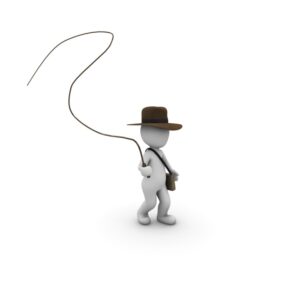Culture And Behaviours
‘Safety culture is not about individuals, but what happens between individuals,’ in conversation with the ‘Indiana Jones of safety,’ Carsten Busch
Ahead of EHS Congress, taking place in Berlin in September, SHP catches up with the ‘Indiana Jones of safety,’ safety mythologist and historian and speaker at this year’s Congress, Carsten Busch, to discuss the history of safety and the importance of messaging when changing or introducing a new safety culture.

Tell us a little about your background and how you got into safety…
Carsten Busch (CB): “Some say the job of safety professionals is preventing accidents. I got into safety by (lucky) accident. I am educated as a mechanical engineer. I knew within some months that I wasn’t going to spend my life on that, but finished the study anyway. Had the good fortune to get an assignment about occupational safety and environmental care in my practical year. At first, I thought my mentor was crazy (‘We don’t learn that at technical college’) but it turned out to be so much fun. A bit of everything: technical, chemical, legal, organisation, people, … After graduating I only applied for these kind of jobs. The rest is history, and I still love the field. Dealing with risk and uncertainty is fascinating. As is learning from things that happen.”
You’ve been described as the ‘Indiana Jones of safety.’ Why is the history of safety so important to you? How has safety changed over the years and why is it important that we learn from what has gone before us?
 (CB): “I have always been interested in history, but realised that there was no money in that, so I went to study mechanical engineering instead. Many years later, I noticed that peers misused or misinterpreted safety approaches. Or that they discussed subjects without knowledge. I decided not falling in that trap and went down the rabbit hole of exploring the origin and development of approaches. I am fascinated by the development of knowledge in our profession.
(CB): “I have always been interested in history, but realised that there was no money in that, so I went to study mechanical engineering instead. Many years later, I noticed that peers misused or misinterpreted safety approaches. Or that they discussed subjects without knowledge. I decided not falling in that trap and went down the rabbit hole of exploring the origin and development of approaches. I am fascinated by the development of knowledge in our profession.
“There is a quote by Karl Weick (from his fantastic book Sensemaking in Organisations) that I fully subscribe to. ‘Part of professional development consists of cultivating an appreciation of historical roots of current issues, questions, and concepts.’ We need to understand that where we are is because of what came before. This is just as any science or profession. We build on what others did before us, we use their ideas, we adapt them, sometimes we also need to discard or nuance them. Therefore, it is important to understand the past. Risk, culture, organisations and their structures – it’s all path dependent. History matters.”
When looking to introduce a positive culture, or change a negative one, within an organisation, how important is it to have a motivated workforce behind you and how important is the messaging around what you are trying to achieve?
(CB): “I don’t like to speak about cultures in terms of ‘positive’ or ‘negative’. I don’t think normative statements are very helpful. Most of the time, they merely reflect our preferences. It’s more helpful trying to understand why cultures are as they are (Here’s another link to history! There you will find answers.) Neither do I believe in introducing cultures. There is always something that already is there, and you will have to work from that (unless you choose to adopt a Mao/Stalin-like approach of wiping that out first). Culture is what has brought a group to where it is now. Culture has contributed to the group’s survival, so there is some strength in there. Using that means often that people are motivated (which they usually are, only perhaps not of our preferences), at least in part.”
You say that ‘culture is a property of a group of people, not individual’s’. Why is that collectiveness so important and how can you go about achieving it in a business?
(CB): “It is important to keep in mind that culture is a group thing. All too often one sees that culture is made a property of the individual, e.g., with slogans like ‘Safety culture starts with you’. Sure, we all have a part to play. But safety culture is not about individuals, but what happens between individuals. How they interact. If you want to influence a system you can aim at three things: its components, the interactions between components or the system’s goal. Changing components is often not very effective, changing the goal is often not an option (however, if it is, it is a very powerful way!), so the main focus in most situations if to aim for what happens between the components.”
What are you most looking forward to about attending EHS Congress, in Berlin, this September?
(CB): “The thing I look forward to most is definitely meeting some interesting people, some of which I will be meeting for the first time in real person!”
You are speaking as part of a panel discussion on bridging the gap between academics and HSE practitioners. What do you think you will bring to the discussion?
(CB): “I have an interesting position which might add something interesting to the discussion. I am a HSE practitioner in my daytime job, working with all levels of management, workers, representatives and junior HSE advisors. I am also a tutor for students in the Lund university master’s program for Human Factors and System Safety – students which all are practitioners themselves. And, a few months ago, I enrolled in the first year as a PhD candidate. So, I would say I have some ongoing experience bridging the gaps between these worlds in various settings. Also, most of my books (and other writing) aim to close some of the gaps by translating theory to practice.
“Sometimes there seems to be this shouting match between various ‘tribes’ in safety. That may be a satisfying pastime for participants, but it’s not useful for the profession and for the people we are supposed to help. Surely, progression depends on asking critical questions, on disagreeing, discussing and debating. But in too many cases, I am afraid it’s not done in constructive ways. I think that – also because of a decent basis in history – I can move comfortably between groups and understand their arguments.”
Hear more from Carsten Busch at the 2022 EHS Congress, taking place in Berlin from 13-14 September. His panel debate, ‘Bridging the gap between academics and HSE practitioners,’ as well as his breakout workshop, ‘Safety is a choice, or is it?’ will take place on day one of the conference.
Click to register for your place and to see the full EHS Congress agenda.
Click here for more from EHS Congress on SHP.
‘Safety culture is not about individuals, but what happens between individuals,’ in conversation with the ‘Indiana Jones of safety,’ Carsten Busch
SHP catches up with the ‘Indiana Jones of safety,’ safety mythologist and historian, Carsten Busch, to discuss the history of safety and the importance of messaging when changing or introducing a new safety culture.
Ankit Kumar
SHP - Health and Safety News, Legislation, PPE, CPD and Resources Related Topics
Marcin Nazaruk: ‘Conditions that will create our next accident exist today’
James Macpherson on risk: ‘More of the same won’t work’
Lives depend on asbestos action, says IOSH


 (CB): “I have always been interested in history, but realised that there was no money in that, so I went to study mechanical engineering instead. Many years later, I noticed that peers misused or misinterpreted safety approaches. Or that they discussed subjects without knowledge. I decided not falling in that trap and went down the rabbit hole of exploring the origin and development of approaches. I am fascinated by the development of knowledge in our profession.
(CB): “I have always been interested in history, but realised that there was no money in that, so I went to study mechanical engineering instead. Many years later, I noticed that peers misused or misinterpreted safety approaches. Or that they discussed subjects without knowledge. I decided not falling in that trap and went down the rabbit hole of exploring the origin and development of approaches. I am fascinated by the development of knowledge in our profession.
Good article